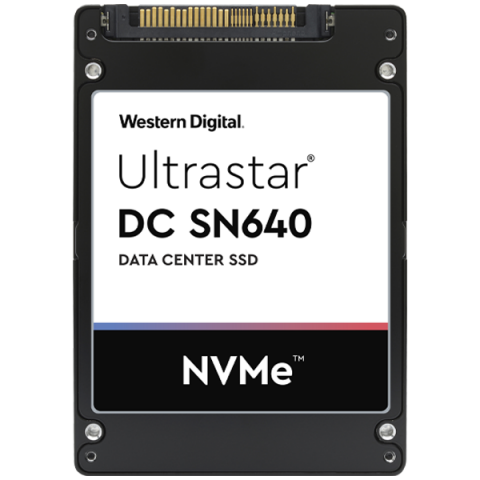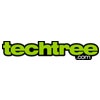-
Team TechTree
13:58 23rd Jun, 2020
Top things to keep in mind while choosing Enterprise SSDs | TechTree.com
Top things to keep in mind while choosing Enterprise SSDs
Western Digital has projected top things to keep in mind while choosing an Enterprise SSDs.

If you are in the market for a solid-state drive (SSD) to improve overall storage system performance, you must first have an understanding of the vast amounts of different SSD features and characteristics, so you can select the drives that best suit your environment and applications. However, even seasoned system administrators are, at times, bewildered at the swarm of ever-evolving SSDs on the market. Despite knowing that SSDs offer high data transfer speeds, some may think that the storage capacity is too low, or believe that SSDs are too expensive, not balancing the improvements and value SSDs could present in terms of faster business results or higher productivity.
Enterprises across virtually every industry and sectors understand the potential that data offers. To leverage the value of their data, they are using various computations, algorithms, machine learning and analytics to unlock patterns that provide valuable insights. In order to capitalize on these opportunities, it can sometimes become quite tedious to choose the right storage device for your system. It is important to note that extreme big data and fast data workloads demand a sound storage infrastructure with specific capabilities. Therefore, in order to narrow down on a suitable SSD storage device, a checklist can make the process easier: -

- Form Factor
This defines where the SSD fits, whether it is possible to replace it without powering down the server, and how many SSDs can be packed into a chassis. Typically, for SSDs, such as Western Digital Ultrastar DC SN640 NVMe, the form factor of 2.5 inch is the most common. Such drives are hot-swappable and can fit 24 such drives on most 2U servers. While M.2 and Add-In Card are other common form factors and offer higher bandwidth and power profile than 2.5-inch drives.
- Interface
There are three types of SSD interfaces: SATA, SAS and NVMe and each has its own set of applications. SATA with its legacy protocol optimized for rotating media (HDDs) offers a maximum transfer rate of 600 MB/s. Whereas, SAS drives, such as Western Digital Ultrastar SAS series SSD, offers a more robust enterprise feature set with higher data transfer rates. On other hand, NVMe drives, such as Western Digital Ultrastar NVME SSDs are designed as an ultra-high-speed connection interface for near-memory applications, thereby delivering unprecedented low latency compared to the other two interfaces.
- Endurance
Each SSD warranty comes with a limited amount of erase and write cycles for data over its lifetime. Hence, the selection of the SSD will depend on its intended application. For instance, choosing a high endurance SSD for a read-mostly application will needlessly incur a higher cost. Whereas, choosing a low endurance SSD for a high-write workload can lead to a premature drive failure.
- Error handling & data protection
In comparison to consumer SSDs, enterprise SSDs offer better data protection safeguards. Unexpected events such as power failure or flash errors can corrupt the data. With features such as NAND error handling, power-failure protection and end-to-end data path protection, enterprise SSDs make sure there is minimal possibility of data loss, with state-of-the-art data encryption.
- NAND
The most common type of flash memory, NAND is a type of non-volatile storage technology that are built on flash cells and do not require any power to store data. These flash cells range from single-level – storing one bit per cell – to quad-level cell that stores 4 bits of data in a single NAND cell. The multi-level cell (MLC) technology allows 2 bits per cell, doubling the storage capacity of a single NAND chip. This TLC is the most prevalent in enterprise-class SSDs and delivers reliable performance and endurance.
- Performance
By now we know that SSDs are fast, making them the preferred choice for data storage. However, measuring the performance of an SSD does not follow a one-size-fits-all approach. SSD performance depends on the specific workloads running on them. Transfer speed and latency are the most important metrics for SSD application performance. Latency is the time taken by the drive to read or write data – a lower latency is always better.
- Power and overprovisioning
SSDs can be tuned up to optimize power consumption and enhance drive performance. When deployed in a data centre rack, enterprise SSDs can be configured to consume less power, which result in reducing energy consumption of the storage system, often at the cost of performance. In addition, enterprise SSDs also have user-accessible space that vary from 1% to 20% less than the total amount of flash on drive. This can be used to increase usable write performance but not read performance.
Conclusion
Enterprise SSDs, especially NVMe SSDs, are an excellent choice for intensive workloads, such as highly transactional databases, web streaming, and dense environments like VDI. With a clear understanding of all the important details that shape your requirement, you can make a much better choice while you shop.
Disclaimer: The story is in the form of a Press Release and has not been edited or reviewed for language or content. The content is published in the form that it was received by the editors after removing certain personal information such as contact numbers and emails. Techtree.com is not responsible for the veracity of this content
TAGS: Western Digital, SSD
- DRIFE Begins Operations in Namma Bengaluru
- Sevenaire launches ‘NEPTUNE’ – 24W Portable Speaker with RGB LED Lights
- Inbase launches ‘Urban Q1 Pro’ TWS Earbuds with Smart Touch control in India
- Airtel announces Rs 6000 cashback on purchase of smartphones from leading brands
- 78% of Indians are saving to spend during the festive season and 72% will splurge on gadgets & electronics
- 5 Tips For Buying A TV This Festive Season
- Facebook launches its largest creator education program in India
- 5 educational tech toys for young and aspiring engineers
- Mid-range smartphones emerge as customer favourites this festive season, reveals Amazon survey
- COLORFUL Launches Onebot M24A1 AIO PC for Professionals







TECHTREE